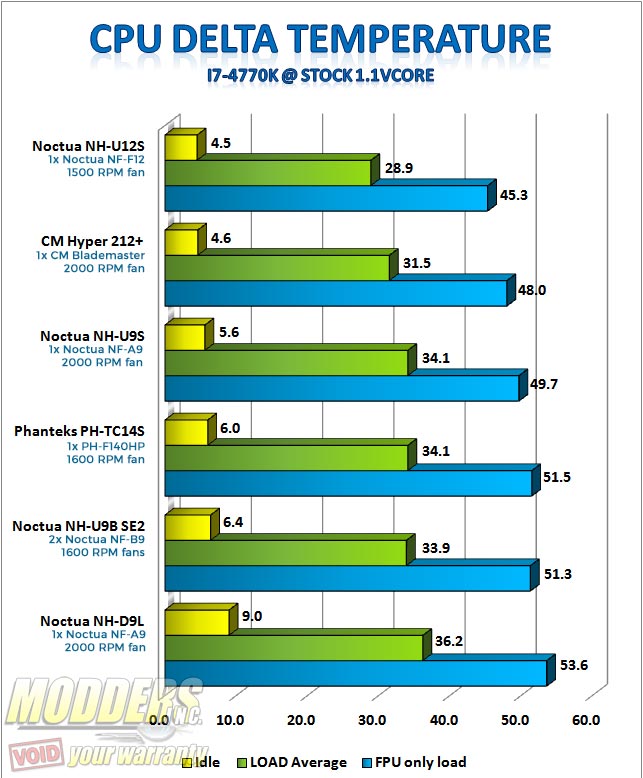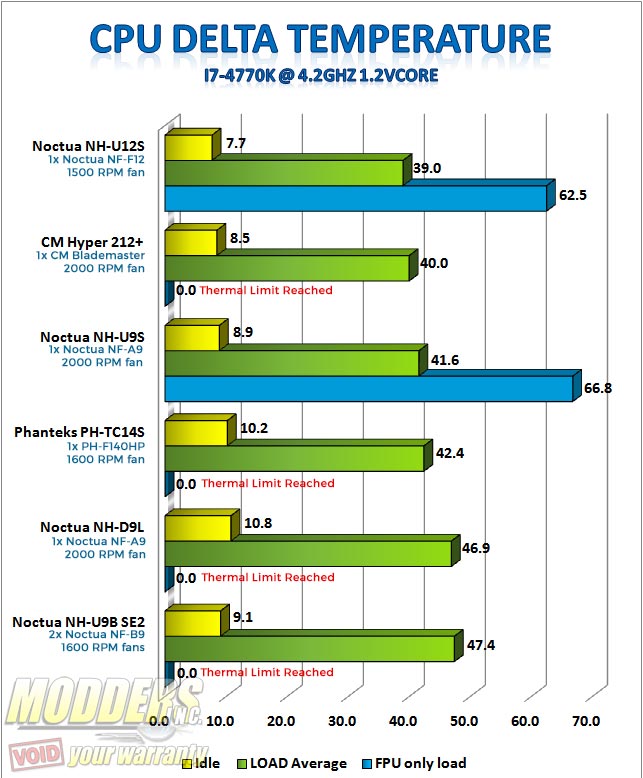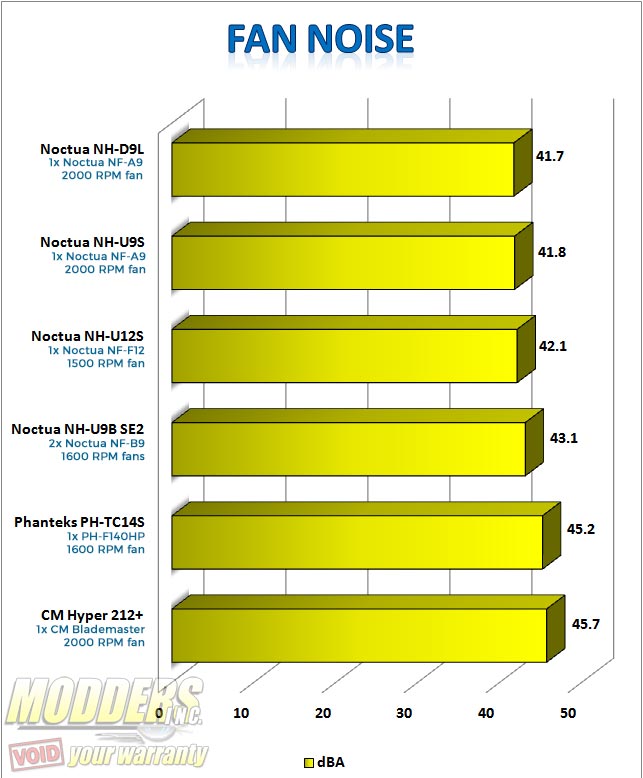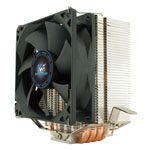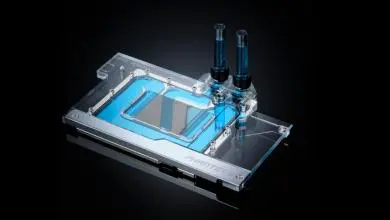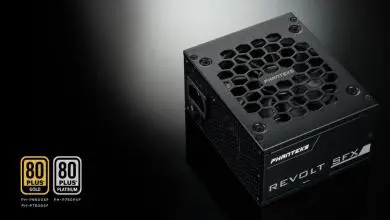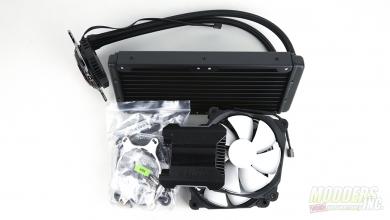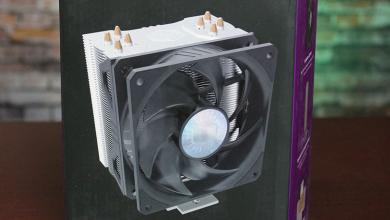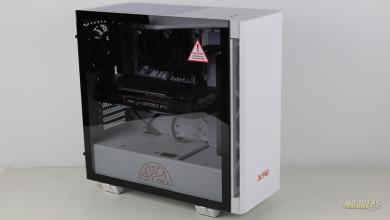CPU Cooler
Phanteks PH-TC14S Dual-Tower Review: Conflict-free CPU Cooling?
« Installation Procedure and Clearance Issues | Final Thoughts »
Test System and Benchmark Results of the Phanteks PH-TC14S
Test System and Benchmark Results of the Phanteks PH-TC14S
- Ambient temperature monitored at case intake and temperature Delta was used.
- All case and heat sink fans were benchmarked with fan control settings disabled and running at 100% unless otherwise specified.
- Intel integrated video is utilized to eliminate additional ambient heat source from discrete graphics cards.
- Temperatures are averaged (last minute) from individual core temperature results monitored by AIDA64 after 15 minutes.
- FPU load average is used to simulate worst case scenario load levels similar to Intel Burn Test or OCCT, results marked “0″ means thermal limit was reached and the CPU was throttled and thus the results were discarded.
- Stock settings have all power saving features enabled in the motherboard with Vcore set static to 1.1V and set to “Balanced” in the OS.
- Overclocked settings have Vcore voltage manually set to 1.2V at 4.2GHz with EIST disabled.
- All tests were taken at least three times to get the final result.
- Note that performance results on this setup are not directly comparable with any benchmarks from previous reviews as the UEFI BIOS on the motherboard has been updated and now has a much tighter control on the Vcore voltage.
- Since it is an ASUS motherboard, it engages all cores when it turbos so temperature will be higher compared to other Z87 motherboards that do not by default.
- An American Recording Technologies SPL-8810 was used for noise level measurement in dBA, 20CM away from the center fan intake.
| Processor | Intel Core i7-4770K (Retail) |
| Motherboard | ASUS Maximus VI Gene Z87 Motherboard (1603 BIOS) |
| Memory | Mushkin Stealth 1600MHz DDR3 |
| Drive | OCZ Agility 4 256GB SSD |
| Video Card | Intel Integrated Graphics |
| Thermal Compound | Noctua NT-H1 |
| Case | DimasTech Mini v1 |
| Power Supply | Corsair HX850W |
| Operating System | Windows 7 x64 Pro |
| Comparison Heatsinks | Noctua NH-D9L | Noctua NH-U9S |
Noctua NH-U9B SE2 | Cooler Master Hyper 212+ | Noctua NH-U12S |
| Fan Size (mm) | 1×92 | 1×92 | 2×92 | 1×120 | 1×120 |
| Max fan RPM | 2000 | 2000 | 1600 | 2000 | 1500 |
| PWM | YES | YES | NO | YES | YES |
| Fan Bearing Type | SSO2 | SSO2 | SSO | Sleeve | SSO2 |
| SLIM | YES* | YES* | NO | YES | YES |
| Direct-Heatpipe | NO | NO | NO | YES | NO |
| Heatpipe Thickness (mm) | 6 | 6 | 6 | 6 | 6 |
| Heatpipe Count | 4 | 5 | 4 | 4 | 5 |
| Price (in USD) | 49.90 | 54.90 | 59.99 | 29.99 | 69.99 |
Benchmarks:
Results marked “0″ means thermal limit was reached and the CPU was throttled.
Sound Level Comparison @ Max Default Fan RPM:
Performance Summary:
The PH-TC14S performance is slightly better with what I expected from a single-fan dual-tower design as previously observed in the Noctua NH-D9L. Stock and overclocked levels keeps it within range of the smaller but excellent 92mm Noctua NH-U9S, although incapable of handling FPU loads under overclocked conditions, reaching throttle limit quickly with 38 seconds and with the reference fan within 8 minutes. The noise levels are also surprisingly high, closer to the Hyper 212+ which is not what I expected from a Phanteks heatsink considering the excellent fans on the PH-TC14PE.
